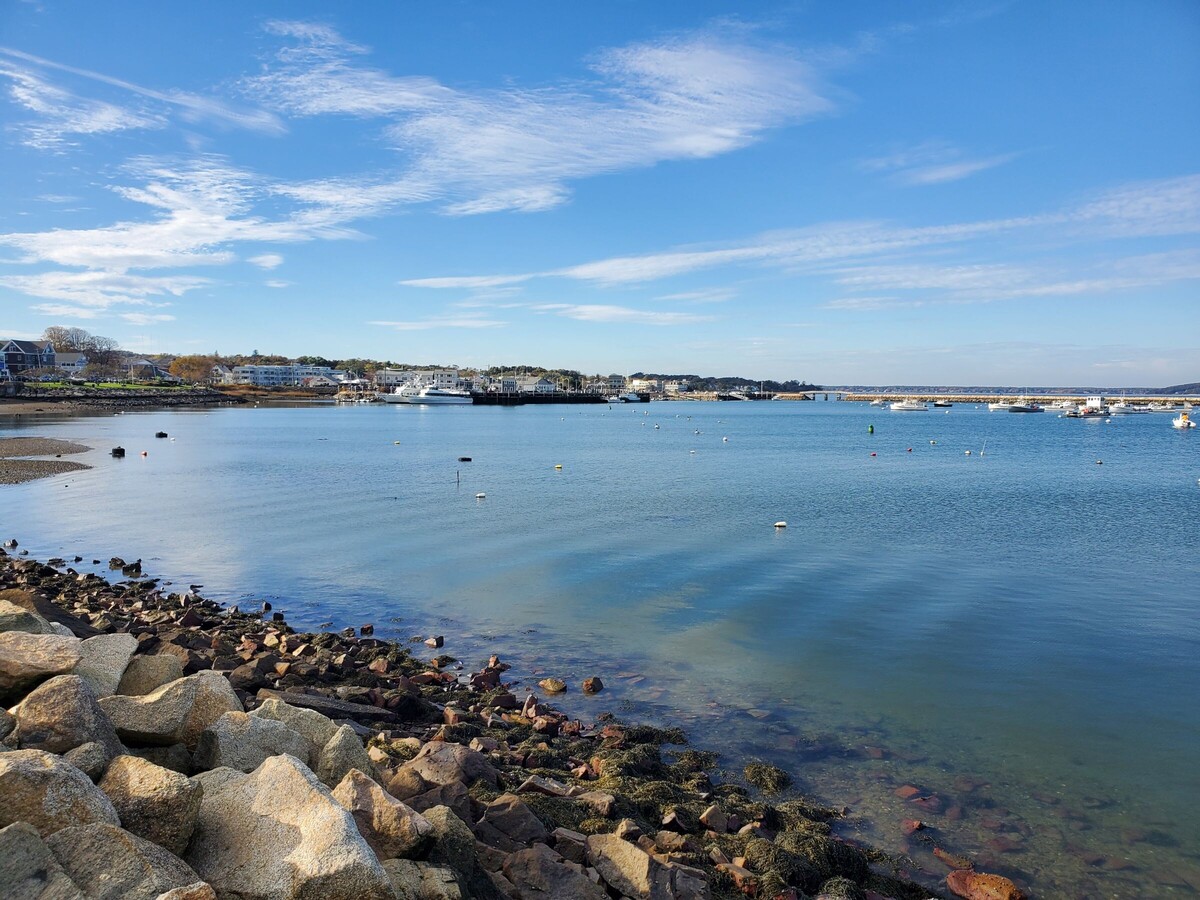Image

It is convenient to think of the birth of America with the defeat of the British after the rebellion and the war for independence. But so much occurred before then, and when and why those events unfolded is also part of American history and woven into the fabric of who we are as Americans.
In September of 1620, a group of around 100 English men and women set sail from Europe in search of religious freedom, on a three-masted ship called the Mayflower. After several attempts to find a suitable place to establish a colony, they landed on the western shore of Cape Cod Bay, in what would later be named Plymouth. The settlers decided the name was appropriate, as the Mayflower had set sail from the port of Plymouth, in England.
The landing occurred in December, and the winter that followed was brutal. Although half the settlers perished that first year, the survivors were able to establish good relations with the native inhabitants. Within five years, Plymouth would become a largely self-sufficient colony, the first English colony in New England.
In fact, three more ships would sail to Plymouth soon after the Mayflower, including the Fortune in 1621. Passengers on these ships would bring fresh supplies which were desperately needed for the colonies.
Interestingly, Cape Cod Bay was not the colonist’s planned destination. However, high winds and rough seas prevented any attempt to land along the Hudson, and the decision was made to attempt a landing on the Shores of western Massachusetts. Because the colony was in Massachusetts, and not the Hudson valley, the colonists wrote a new covenant to establish a government, known as the Mayflower Compact. It was the first document to establish self-government
in the New World and remained active until 1691, when Plymouth Colony became part of Massachusetts Bay Colony.
My friend Ron and I recently visited Plymouth on a lovely Autumn weekend. It began with a drive to Orient Point, where we drove aboard the ferry for the one hour and 20-minute crossing to New London. After a stop in Falls River, to tour the battleship, the USS Massachusetts, we spent the night in New Bedford, and started fresh the next morning in Plymouth.
The Pilgrims owe a lot to the indigenous people who were inhabiting the countryside. Before it was called Plymouth, the village where the pilgrims settled was known as Patuxet, which means “place of running water,” in the Wampanoag language. One particular native, known as Squanto, would serve as an interpreter and mediator between Plymouth’s leaders and the local native tribes, including Chief Massasoit of the Pokanoket tribe. Even more important, the natives taught the colonists how and where to grow corn, and where to fish, which was instrumental to their very survival.
In the Fall of 1621, the Pilgrims shared a harvest feast with the Pokanokets, consisting of venison, chestnuts, cranberries, garlic and artichokes. Turkey was probably served as well. The celebration of thanks took place over three days, sometime between late September and mid-November, and included games and military exercises as well as the bountiful food. By the late 1600s, this day of thanks and appreciation had become an annual fall tradition. In 1863, President Lincoln named the last Thursday in November a national holiday of thanksgiving.
Plymouth is an outstanding destination, whether you appreciate the history here or not. For me, history is always on my mind when I plan these journeys. In this case, besides the history, the area offers a lovely seaside town, beautiful nature walks, and of course Plymouth Rock, where the Mayflower came ashore 400 years ago, bringing with it the English pilgrims, who helped found our nation.
We purchased a bundled ticket, which included a recreated 17th Century English Village, the Mayflower II, and Plymouth Grist Mill. The Mayflower II is a full-size reproduction of the original Mayflower, which was built using 17th century manuals and descriptions, since no photos were available to study. I found it difficult to believe that 102 passengers were cramped below deck on this voyage, without fresh air or modern-day sanitation, on a vessel barely 100 feet long and 25 feet wide. The voyage lasted 66 days.
The grist mill is a reproduction of the original mill, which was built in 1636. It was used to harness waterpower to grind corn into meal or grits, which were staples for a colonial diet. Prior to construction of the mill, grinding corn was done by hand, a very tedious process.
All the attractions at Plymouth, or Plimoth, as it was spelt in the records kept by its first Governor, William Bradford, are staffed with knowledgeable and costumed guides, who are eager to share their knowledge, speaking as actual colonists. We in fact met a townsperson who was mending a chimney, using clay, sand and water to form a hardening, cement like substance. We also witnessed a musket firing demonstration, a favorite of the many school children that were present.
The town of Plymouth also offers whale watching, bay cruises and cultural activities. You can stroll along Water St., which lines the harbor where the Mayflower II is docked, or Main St., where you will find restaurants, antique shops, galleries, a theater, coffee shops and other businesses. Plymouth is the quintessential, quaint new England town.
Whether the pilgrims actually crossed over Plymouth Rock when they set ashore is debatable. However, there is no question it has become a foundational token of religious freedom, perseverance, and stoic determination. For many, including myself, it is the quintessential symbol of the American spirit, the very essence of America.